Common Chokecherry
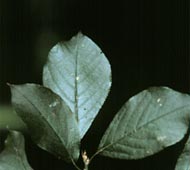
Leaf Characteristics
- broad, flat leaves
- simple leaves
- not lobed
- fine, double teeth
- all teeth same size
- shorter stem
- all side veins same length
- long, not narrow
- veins curved
- less than 5 inches long
- stem less than one-third length of leaf
- short tip, veins not dense
- oval
- smooth
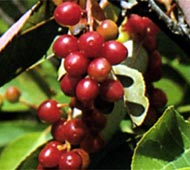
Fruit Characteristics
- other fruit (not cone, winged, acorn, or in pod or capsule)
- without husk or capsules
- loose, not packed tightly together
- fruit with pit
- whole fruit less than 1 inch
- fruit without strap-like modified leaf
- not like rasperries
- fruit not at end of single stalk
- loosely clustered
- various colors but leaves not modified
- round and dark red
- 0.3" in diameter
The Common Chokecherry is a small tree, sometimes a shrub, and often it forms dense thickets of woody growth. The bark of the tree is brown or gray, sometimes smooth, sometimes scaly. The Common Chokecherry grows commonly in rich moist soils, but often is found in poorer, drier soils. It grows in forest edges and openings, and often is found in uncultivated edges and corners of farmland.The natural range of this tree includes much of southern Canada and northern United States. In Ohio it occurs most frequently in the northern counties and in scattered parts of the southern counties. The wood of this tree is similar to that of the Black Cherry, but it has no commercial value because of the tree's small size. Many kinds of wildlife eat its small fruits. Although the fruit is harsh and puckery, people sometimes use it in making jellies. People also occasionally plant the Common Chokecherry tree as an ornamental, or to provide food for birds.
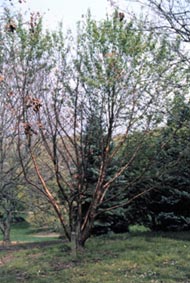 Tree Size
height 6' - 20'
diameter 2' - 6'
Tree Size
height 6' - 20'
diameter 2' - 6'
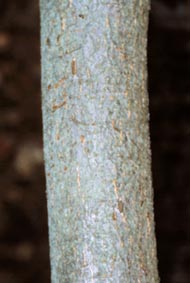 Bark
Bark
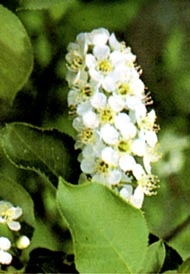 Flower
Flower 